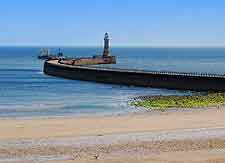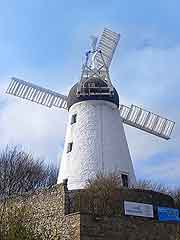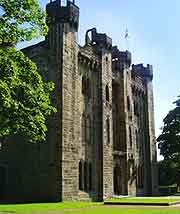Sunderland History Facts and Timeline
(Sunderland, Tyne and Wear, England)

A journey through Sunderland's history takes us from its earliest days as an Anglo-Saxon community, through its industrial past, to the modern city we know today.
Sunderland's origins date back to the establishment of a monastic settlement here in 674 AD by nobleman Benedict Biscop. The monastery, which overlooked the coast at Wearmouth, was known as St. Peter's Monkwearmouth and it soon became a centre of religious learning. Indeed, the Venerable Bede is said to have written the very first history of England here. Religious life came to an abrupt end in the 9th century AD, however, when Danish raiders ransacked the community. Of note, the name of Sunderland appears to derive from 'asunder-land', or 'land that was put to one side'.
Early Origins of the City
Sunderland officially became a town in 1154, when it was granted a charter and the right to hold a weekly market. Throughout the Middle Ages, it remained a relatively small community, with only a few hundred people living here at most. From the 1300s, we start to see the beginnings of industrial activity here, including salt-making, lime-making and shipbuilding. Sunderland also became known for transporting coal. Bowes Quay was built to meet demands for coal from London and the east coast of England.

From the 17th to the 18th Century
During the English Civil War, Sunderland was a garrison for Parliamentarian soldiers and a headquarters for attacks on Royalist strongholds in the Durham and
Newcastle areas. Its Parliamentarian leanings were to have great political consequences. If it had joined Royalist Newcastle, Cromwell's supply of coal from the north of England would most likely have been cut off.
Business boomed during the 18th century. In 1719, Sunderland became a separate parish from Wearmouth. It boasted a flourishing rope-making industry and piers were built on the south and north banks of the River Wear. The Wearmouth Bridge was completed in 1796.
From the 19th Century to the Present Day
Like many northern cities at this time, living conditions were poor for many of its inhabitants. Outbreaks of cholera in the 1830s and 1840s were the result of these unsanitary conditions and general overcrowding. The wealthy, on the other hand, could enjoy a much better quality of life in the middle-class suburbs that developed on the northern side of the River Wear.

Little by little, however, life for Sunderland's workers did improve. Gas lighting was introduced in 1824 and a proper network of sewers was built from the 1850s. Major Victorian public building works included the Theatre Royal and the Sunderland Museum, Library and Art Gallery. Public recreational facilities included Mowbray Park, opened in 1857. In 1895, the city could finally enjoy electric lighting. Throughout the Victorian era, the city was famous for its shipbuilding and coal mining industries. New docks were built and a number of collieries opened up between the 1830s and 1900.
The story of Sunderland's history during the 20th century is similar to that of many other northern English cities. It suffered greatly during the economic depression of the 1930s. Indeed, up to a third of its working population at that time was unemployed.
Sunderland was also badly damaged by bombing raids during World War Two. Thus, from the 1950s onwards, the city had to carry out major rebuilding work. This included slum clearance and the construction of new housing estates. In the 1980s, a reliance on coal mining and the subsequent decline of that industry led to the return of high unemployment rates. In more recent years, the city has sought to attract new industries, succeeding in establishing itself as a centre for car making in Britain. In 1992, it was officially given city status.
 A journey through Sunderland's history takes us from its earliest days as an Anglo-Saxon community, through its industrial past, to the modern city we know today.
A journey through Sunderland's history takes us from its earliest days as an Anglo-Saxon community, through its industrial past, to the modern city we know today.
 Little by little, however, life for Sunderland's workers did improve. Gas lighting was introduced in 1824 and a proper network of sewers was built from the 1850s. Major Victorian public building works included the Theatre Royal and the Sunderland Museum, Library and Art Gallery. Public recreational facilities included Mowbray Park, opened in 1857. In 1895, the city could finally enjoy electric lighting. Throughout the Victorian era, the city was famous for its shipbuilding and coal mining industries. New docks were built and a number of collieries opened up between the 1830s and 1900.
Little by little, however, life for Sunderland's workers did improve. Gas lighting was introduced in 1824 and a proper network of sewers was built from the 1850s. Major Victorian public building works included the Theatre Royal and the Sunderland Museum, Library and Art Gallery. Public recreational facilities included Mowbray Park, opened in 1857. In 1895, the city could finally enjoy electric lighting. Throughout the Victorian era, the city was famous for its shipbuilding and coal mining industries. New docks were built and a number of collieries opened up between the 1830s and 1900.